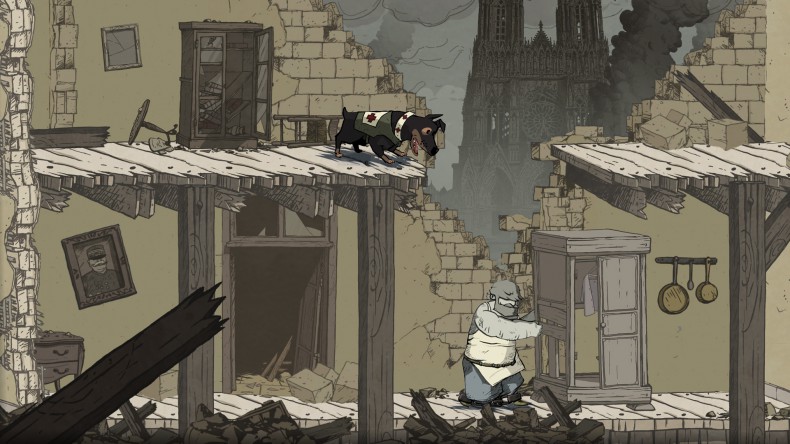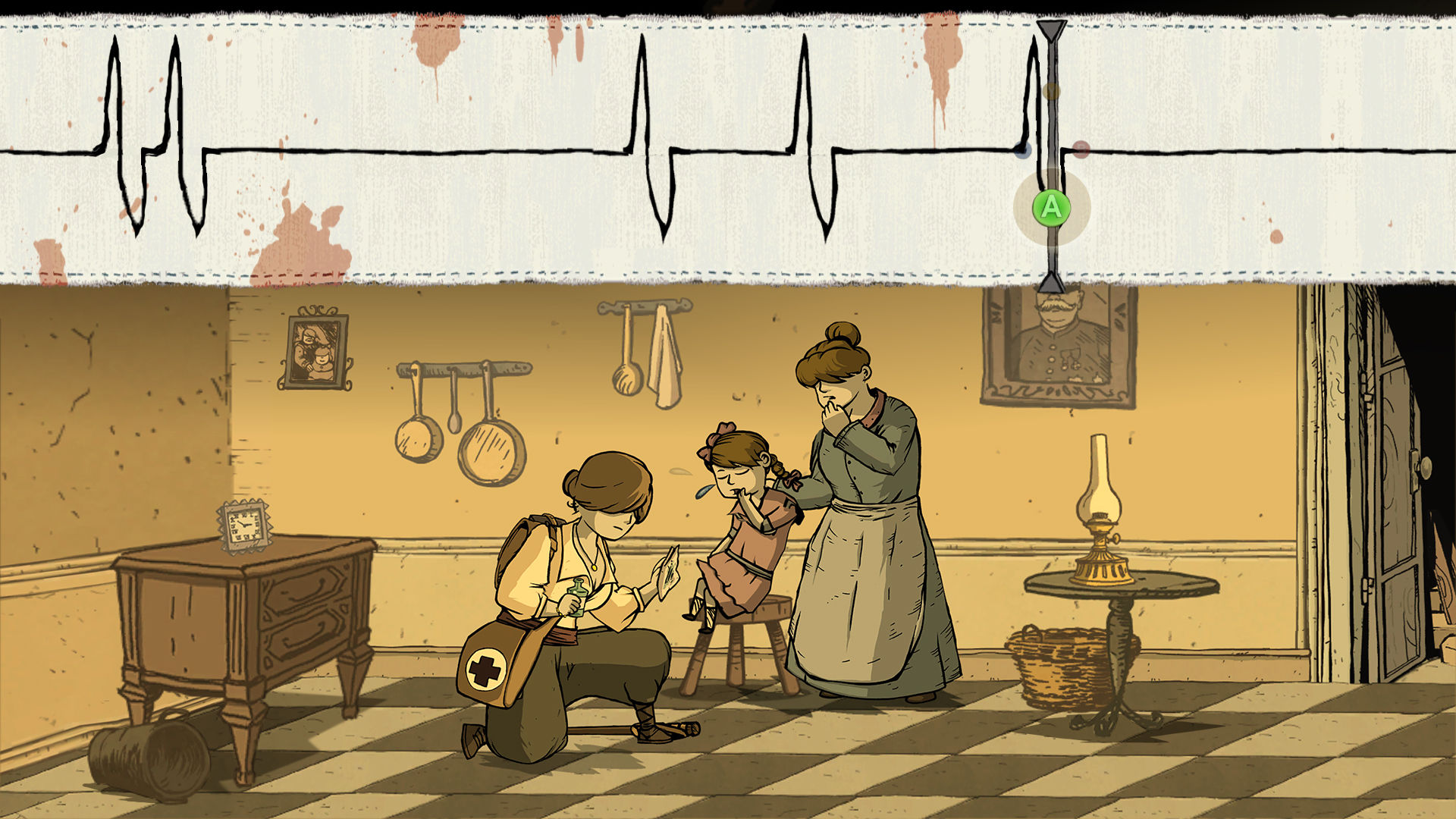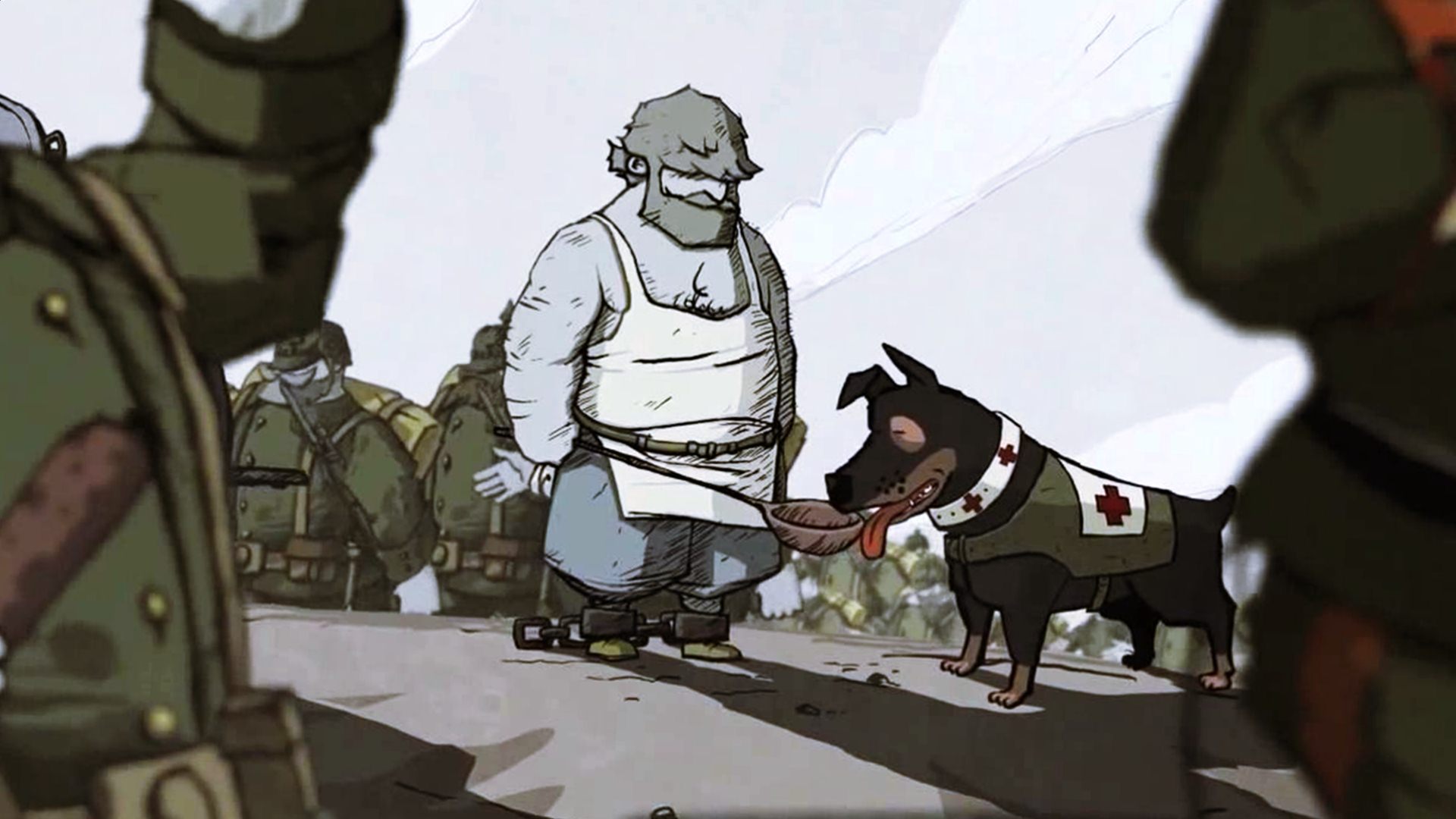Valiant Hearts: The Great War Review

+The storytelling is fantastic
+The characters are well presented and I cared about each one
+The puzzles are clever, if not taxing on the brain
+The art style is simple yet gorgeous
+The dog
+It's depressing
-It's depressing
-The quick time mini games and late game action sequences can become tedious
In an age where video games are seen as art, there are still those that refuse to see them as such. For those people, I would like to present Ubisoft Montpellier’s Valiant Hearts: The Great War. With a beautiful, hand drawn art style, simple but effective storytelling, and some novel gameplay mechanics, it presents a case for games as art that even the most staunch opponent to the notion can’t help but be swayed. As a vehicle for storytelling, Ubisoft Montpellier has succeeded in spades. As a video game, they come up slightly short due to some mechanics and ideas that drag down the overall experience
Valiant Hearts: The Great War tells the story of four characters during World War I torn apart and brought together by the massive, devastating event. First there is Emile and Karl, father-in-law and son-in-law respectively, who are forced to fight on different fronts due to Karl’s German nationality despite being married to Karl’s daughter, Marie, and residing in France. Deported by the French government due to the declaration of war on Russia for the death of Archduke Franz Ferdinand, Karl is soon drafted into the German army, and Emile drafted into that of the French. The game immediately sets up what’s at stake here and does it incredibly well with no discernable dialogue save for the narration.
We then meet Freddie, an American who volunteers to fight for the French and has a laser sharp focus on hunting down Baron Von Dorf for extremely personal reasons. Emile and Freddie soon meet up and form a fast friendship as they both pursue Von Dorf. Along the way, the two soldiers meet Ana, a student and field nurse, who is also after Von Dorf because he’s kidnapped her scientist father and has been forced to create advanced technology for the Germans to use in the war. Accompanying the trio is an unnamed German Shepherd who serves as a faithful companion as well as partner.
The story takes the group to and from the front lines of many devastating battles while mostly in pursuit of the evil Baron Von Dorf, often stopping to tell little vignettes that involve each of the characters on their travels. I genuinely felt something for all of the characters, especially Emile and Freddy after seeing their experiences, their triumphs, and their failures. It’s really good stuff and on its own it would be enough to recommend the experience. Be warned though, while the gorgeous visuals and minimalistic sound design soften the brutality of the subject matter, this game is very much about war and the effects it has on the people involved, and as such it can be incredibly depressing. It’s made even more so throughout if you read the diaries, historical facts, and the collectibles’ descriptions.
However, this is a video game after all, and as such it mostly succeeds. At its, erm, heart, Valiant Hearts: The Great War is an adventure game, so about 80 percent of the gameplay involves solving puzzles to advance to the next section. Some of these puzzles are easier than others, and while none are incredibly taxing on the brain, they’re often clever and well thought out with several moving parts needing to align before they can be completed. Sometimes you will be tasked with switching characters to help get past an area with the way to switch between characters functioning by sending the dog companion towards one from another. It’s used sparingly, but it’s a neat design choice and one I personally have never experienced. The game also employs some stealth missions that, again, are relatively simplistic, but always fun.

Ana’s medical mini-game is nothing more than a QTE repeated ad nauseam. Which is unfortunate because it makes her sections of the game the least interesting or enjoyable.
What isn’t fun is the other 20 percent of the gameplay. Where Valiant Hearts: The Great War succeeds as an adventure game, it absolutely fails as an “action” game. The controls are just not precise enough to be enjoyable in these moments and towards the end of the game, action becomes more prevalent and ultimately tedious. It got to the point where I just started rolling my eyes and wanted the game to get to the next story beat thus undermining the experience overall. Another poor gameplay design are Ana’s medical mini-games which are basically a series of timed button presses set over an electrocardiography machine. Essentially quicktime events, these moments would be tolerable had they been used once or twice. However, it comes about so often throughout her segments that once again, it becomes tedious and the antithesis of fun or even engaging, even if the word “fun” in a game about the horrors of World War I seems to be a bit of a misnomer.
One of the things I truly adore about video games, more than any other medium, is the interactive nature and how it can immerse me into a story and evoke genuine feelings through that immersion. Ubisoft’s Valiant Hearts: The Great War is one such game. Equal parts melancholy and charming, mixed ever so slightly with whimsy, the game uses a deceptively simple aesthetic to tell a compelling tale of friendship and love and how war affects these relationships, and how these relationships affect war. Unfortunately, the gameplay (and some design choices) doesn’t always add up to something that is fun to play and ultimately overstays its welcome, thus undermining the impressive storytelling in the process. Still, one must commend Ubisoft for releasing a game such as this, as it’s an experience we don’t get very often.
SpawnFirst Recommends…
 Ubisoft’s Valiant Hearts: The Great War tells a dark story about the tragedy of war. With great storytelling and an incredibly charming art style, as an adventure game it excels. When the gameplay turns to a minor action game or relies on quick time events, not so much.
Ubisoft’s Valiant Hearts: The Great War tells a dark story about the tragedy of war. With great storytelling and an incredibly charming art style, as an adventure game it excels. When the gameplay turns to a minor action game or relies on quick time events, not so much.







